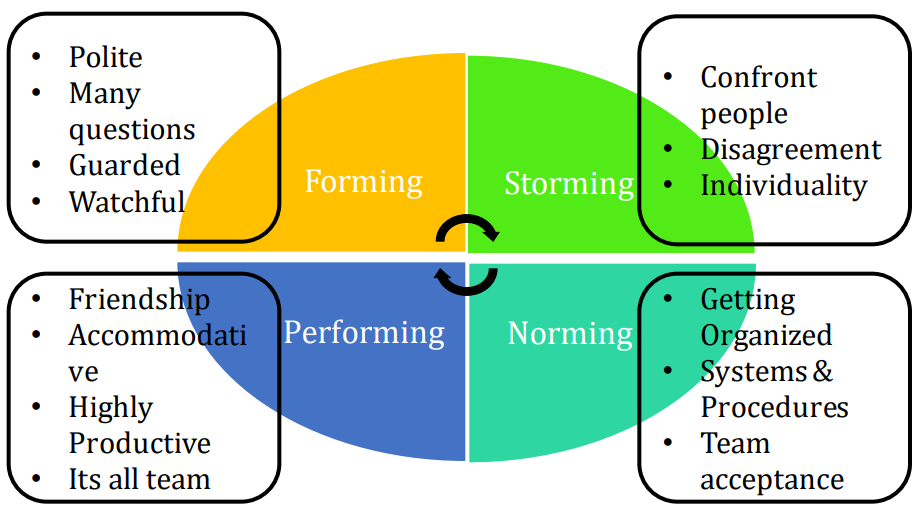
Project Team Dynamics
-
Six Sigma is teamwork, and every team member's contribution is
important for the project’s success. The process of team
development is an important first step to high performance.
Each team moves in phases to reachthe Performing stage.
-
It is important to move from Forming to the Performing stage
quicklyto ensure the project's success.
-
Team members come together & get
to know their respective roles.
Minimal productive
-
Team members experience anxiety,
suspicion, fear, or hesitation to
participate.
-
They may also be resistant to the
added workload, especially when
they find their personal value-added
is low.
-
Team members will have many
questions: Why was I included? Who
are the other team members and
their roles? What is the intent of the
project? Is there any threat to my
work or my job? What will I gain from
this project?
-
Team members express the behavior
of pleasant and politeness.
-
Storming is the most critical phase & it
sets the tone and mechanics for ongoing
team dynamics. The team is a little
productive atthis stage.
-
Team members assert their
individuality and separateperspectives.
-
Team members may compete for
influence, and there may be disunity
and tension.
-
The team formally clarifies its goals,
roles & responsibilities, identifies
barriers, builds relations, and develops
the necessary infrastructure support
mechanism.
-
Ground rules governing how the team
meets, communicates, assigns work,
and makes decisions are formalized.
-
Team start gaining the
momentum
& productivity is in
increasing trend
-
Members start accepting the
team, team’s Dos and Don'ts,
their individual role, and
alignment with the bigger project
goals
-
Increased togetherness in the
team as the team starts
cooperatingwith each other.
-
Team members access the
information
& the team starts
voicing their opinions, and it is
mostly constructive innature.
-
Team unity is enhanced & the
team starts realizing the work
accomplished.
-
Team member will have
a sense
of belonging in the team
-
Highly productive phase of team
Dynamics.
-
Team members come together and
startfinding solutions
-
Team decisions replace individual
decisions.
-
Team spirit is high & they start
helping each other to overcome
obstacles
-
Members develop insights into
personal and interpersonal
processes.
-
Members make start
accommodating each other and
work towards the interest of the
team
-
Free flow of Information.
Disagreements are discussed and
resolved constructively
-
Faster the team moves from Forming to the Performing
stage is better for the project


